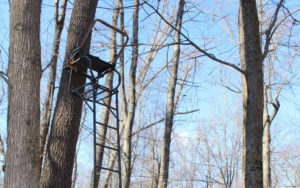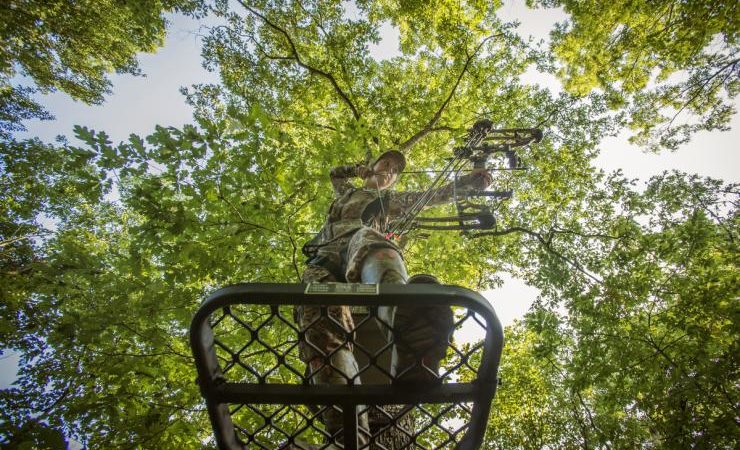Written by Carly Verbeke:
I am not ashamed to admit that I am the girl who gets excited as soon as the calendar turns to October 1st. I break out my ugly Halloween sweater and go around in high spirit, wishing everyone a happy October. This year was no different. Before the day was over, I called my dad and wished him the same. Seeing as I’m from Michigan, though, he responded in an equally excited tone: “Happy opening day!” How could I forget? In Michigan, at least, October is the opening day for bow hunting – of course he was excited. I’m pretty sure he leaves his tree stands up all year, just waiting in anticipation for the calendar to hit October 1st, as well. There are two kinds of people in this world, I guess – or maybe three, if you don’t enjoy Autumn weather or hunting.
That exchange between my dad and I popped up in my head again the other day, as the opening day for gun hunting happened recently (November 15th). When people say they had a “hunting accident” it is usually gun hunting that comes to mind. Even more specifically, most people picture a gunshot injury. Believe it or not, accidents while hunting with a gun can happen for a variety of reasons, and even a seasoned gun hunter is not immune. Judgment mistakes often cause the most serious hunting accidents: failure to identify the target is the most frequent cause of gunshot hunting injuries. Sometimes, the victim may even be out of sight of the shooter. Gun experts maintain that most firearm injuries result from pointing a gun in an unsafe direction. They advise knowing where the muzzle is at all times. Diverting your attention even for a split second can have terrible consequences. In fact, 3.1% of the spinal cord injuries (SCI) seen each year are caused by gun hunting accidents.

Even more of the SCIs seen each year are caused from falling out of a treestand while hunting. In fact, the most common cause of hunting injuries is not gun-related. According to national statistics, tree stand injuries and fatalities far outnumber hunting injuries from guns. A tree stand typically sits 10 to 30 feet above the ground. Of course, any fall from that height is dangerous, but some of them prove to be fatal. Survivors often acquire SCIs or brain damage, which leaves them permanently disabled. These accidents can be caused by anything. Slipping on or missing steps and losing grip accounts for 28% of accidents. Broken straps cause 16% of injuries. Human error accounts for 11% of tree stand accidents. Breaks in the stand or ladder account for 15% of accidents. To take it one step further, basic tree stand safety requires wearing a full-body harness and using it properly. While this safety measure could prevent many accidents, statistics indicate that 85% of tree stand injuries occur to hunters who do not use a harness. An even higher 90% of deaths from tree stand accidents occur to hunters not wearing a harness.

As if that weren’t dangerous enough, the remote location of many hunting spots and tree stands complicates discovery of and prompt treatment for tree stand accident and gunshot victims. Now, I’m not trying to scare you out of hunting or using a tree stand. Hunting is an incredibly popular sport, especially where I grew up, and if it brings you joy then you should absolutely participate. All I’m saying is that you should probably be careful while doing so. To ensure safety on your next trip, consider:
- Using a sturdy tree stand. There are industry standards for commercially built tree stands.
- Practicing using the tree stand in both morning and evening hours.
- Inspecting your tree stand before and after each use. Look for wear, rust, cracks, missing hardware, and rot. Check straps, chains, and other attachment devices.
- Removing logs, rocks, and other debris on the ground below your stand as a precaution.
- Telling everyone in your hunting group the location of your stand. Leave a map on your dashboard with a note indicating your expected return time.
- Keeping a whistle, horn, radio, or cellphone in your pack, along with a first-aid kit and flashlight.
- Wearing a full-body safety harness properly (maintaining three points of contact) at all times.
- Securely attaching your stand to a healthy tree.
- Using a haul line for your gear and keeping your hands free when climbing.
- Unloading your gun or bow before climbing and descending.
- Wearing solid blaze orange or solid blaze pink on the stand and elsewhere as required.
Happy Hunting!


